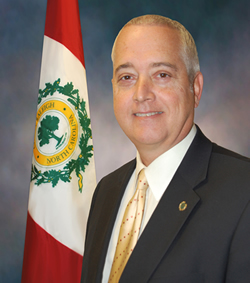Back at the end of July I became curious about a mysterious cell phone tower that sprouted behind the Adventure Landing business on Capital Boulevard. The fresh paint on the box, the fresh dirt around the bottom of the utility pole, and the new electrical meter box that still had the plastic cover on it led me to believe this site had just been installed. Instead, less than three months later the only sign it was there is a small patch of dirt where the pole once was. The site has vanished!
That patch has so much grass growing over it now that if you didn’t know where to look you could easily overlook it. That makes me think that the pole could have been removed perhaps a one month ago or longer.
I had convinced myself that the strange site was simply a micro-cell site but I was flabbergasted when I found the site has gone missing. I never expected to revisit the site and have it just be … gone. Why would a company dig up a cell tower site just a few months after installing it? Hell, maybe even before it had been fired up? I have to say that any company in the business of installing cell towers that would suddenly change its mind about a site after so much work had been done runs a piss-poor operation. At the very least.
I can only wonder again if the site was a Stingray site all along and either
- served its purpose in an investigation, or
- got its cover blown.
Real cell towers don’t disappear practically overnight. Not even micro sites. This is just weird.
